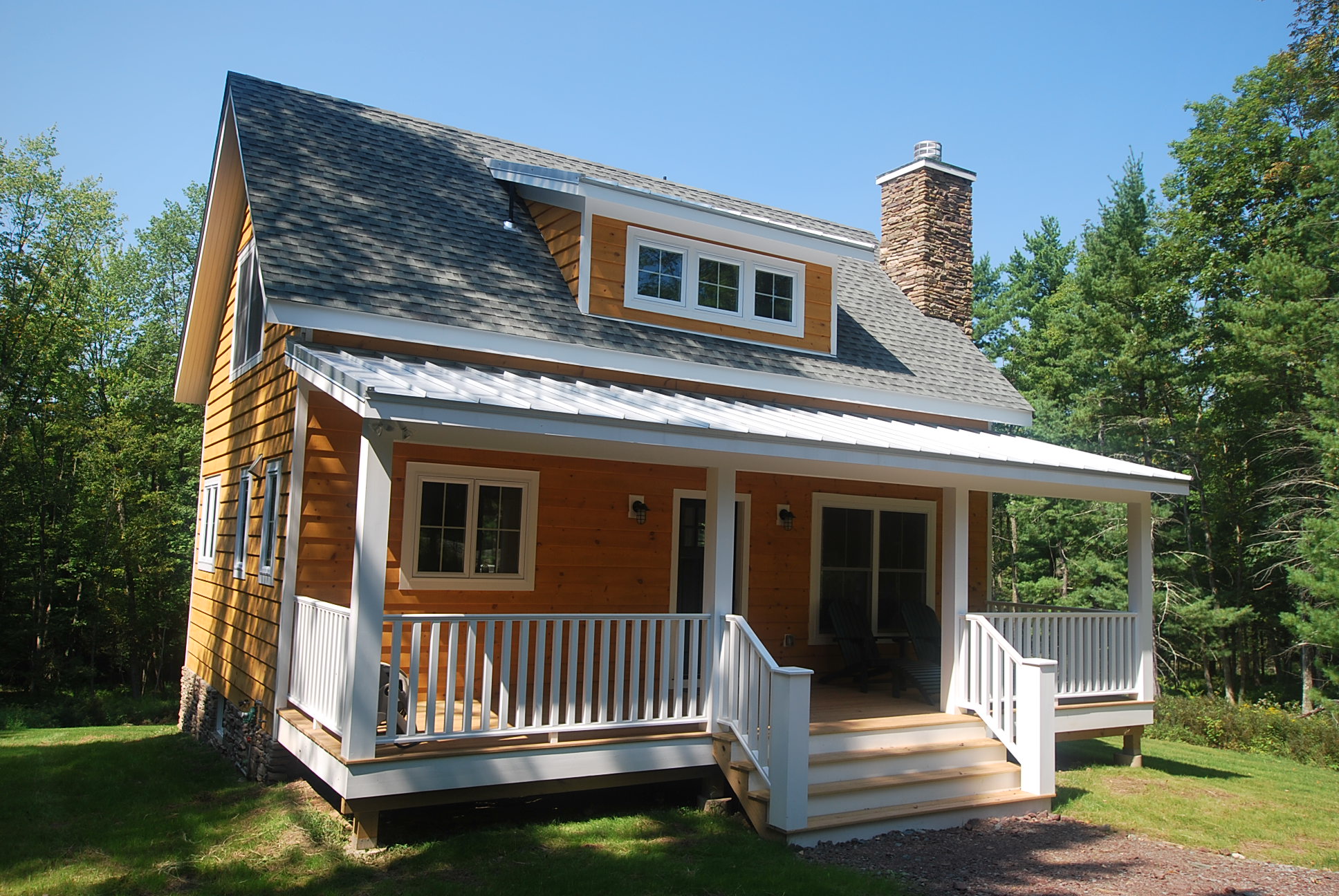An Interview with Catskill Farms’ Charles Petersheim
Lisa Selin Davis | August 24, 2011Upon first glance, you can’t tell that Catksill Farms‘ Victorians, cottages and farmhouses were built sometime in the last few years. They have all the loving detail of vintage homes but with a nifty twist: they’re new, and not necessarily prone to the same problems that invariably plague old homes, the dry rot and mildew and whatnot. And they’re affordable-ish, too, with prices generally ranging from $160,000 to $420,000. The founder, Chuck Petersheim, started his work in Sullivan County after absconding from NYC post-9/11, and interestingly enough, despite the stagnant home economy up here, Catskill Farms has thrived and expanded; they’ve now ventured into Ulster County.
We asked Chuck about the secret to his success, his unusual business model, and why old house hunters might want to alter their tack and go for his retro models instead.
So, first: Chuck, could you relate the tale of how you left downstate for upstate — why there, among all the places you could flee to?
I left New York City over ten years ago after September 11th, 2001. Work began to disappear as the economy began to fail and around the same time the lease on my apartment was up. I decided I wanted something different so I packed up and headed north. I settled in Sullivan County though not intentionally; it was a complete collision between random luck and affordability, which Sullivan County still offers.
I received my first job fixing up barns on the property of Alexis Rockman, a New York-based fine artist and moved into an abandoned 400-square-foot shack. I began fixing up my own home and came up with the idea of creating ‘getaway’ homes for young New Yorkers. Now 10 years later Catskill Farms has built over 90 homes.
What drew you to Sullivan County as opposed to some of the posher spots?
Posher spots were much more expensive, and having little money to get started, Sullivan County offered a chance to relocate, buy a home, start a business.
Your decision to create homes based on traditional architectural styles is an interesting one — there are so many old Victorian farmhouses, Greek revivals, etc on the market.Why did you take this tack, of reinventing the traditional?
There aren’t a lot of grand old houses in the area, and those that are in the area have many negatives such as being right on the road, low ceilings or something else that is just a non-starter for our clients.
We saw the dream of a weekend getaway get lost in the stress of owning, caring for and/or restoring an old home. With many of the people buying upstate being first time home owners (renting in the city), buying a home that needs work while not living there full-time is a real challenge – and I saw the opportunity to provide a ‘house that works’ that accurately and intimately parallels the emotional and architectural feedback that an old house provides.
Do the houses have any notable 21st features? Anything green? Could you tweak one to be passive solar if a customer wanted?
All of our homes feature high-efficiency heating systems, and on-demand hot-water heaters that eliminate the wasted energy of storage water heaters. We also use salvaged barn beams, locally harvested blue stone and reclaimed metal roofing materials.
We have small footprints (small homes) which keep the impact low, we use very enhanced soy-based insulation which results in energy savings of 50%, we use on-demand hot water heaters so zero energy is being used to store hot water (especially nice on a weekend home where it’s not being used that frequently), and we use high-efficiency, gas boilers.
How closely do you work with the customers? Can they be privy to the building process and ask for tweaks, or do they need to buy the finished product without involvement?
Every step of the way from land selection, to house selection, to lawyer and bank referrals, through the entire design collaboration with the home, we are involved with the client.
The majority of the work we do is custom, and we work extremely close with our customers. We like to provide different products for different people depending on what they are looking for. For example, we customize our basic “Cottage” or “Mid Century Ranch” series for people by price and design. All of our customers receive a design orientation; they get a kick out of the idea of doing something with us that they can live in for the next 20 years.
Your financing is interesting, too. Essentially you build it on spec, and, assuming the customer is happy, he or she buys it then? You self-finance all the construction? Is this, um, normal?
I wouldn’t go as far as to say that ‘they buy it if they are happy’ — LOL. they sign a contract to buy, and put money in escrow, and as long as I deliver the house, and they secure their mortgage, it’s a deal. We’ve never had a deal fall apart once in contract… I think that is probably pretty rare.
I use a local bank and my own cash to finance the homes – I’m not sure if it’s normal, but it’s entirely abnormal. For us, it’s the centerpiece of what we offer, since the whole idea of someone from the city buying a piece of land (and the 20 things that entails), designing a house, securing a construction loan and the 100 other things that are needed is just very daunting and a bit unrealistic.
We offer a turn-key, all-in process. And it really makes this whole idea of buying and building upstate much more realistic for our clients.
Did you feel like it was risky to go into real estate considering the subprime meltdown?
We were in it before the meltdown – delivering our first home in 2004. What saved our business in a way was the fact that we never relied on creative financing to sell our homes. Our clients are rock-solid, money in the bank, 20% clients, and when times got tough, this was very important in order to continue to sell homes.
What’s the secret to expanding your homebuilding business when the upstate market is infamously over-saturated and depressed? It’s an inspiring story, and so unusual from what we’ve seen.
Know thy Customer. You must constantly evolve based on information you gather from client encounters, even if it differs from what you thought you should be doing, and constantly experiment with different marketing platforms. Work hard, stay focused on your core product and constantly improve it. Even as the business grows and stabilizes, remain fearful of a mis-step that sets you back.
Why did you decide to expand into Ulster County?
It’s prime second home heartland territory. We are specially expanding to Saugerties and Woodstock specifically because the river, the mountains, the towns all add to the amenities e people are looking for when buying a weekend home.
Our clients in Sullivan County typically have different priorities, mostly revolving around their homes, their privacy and their kitchens – having a super active social calendar is not always a priority.
Tell us about your customers — where do most of them come from? What do they have in common?
Most of our buyers are 35-43 year-old metropolitan professionals. Many of them come from Manhattan and Brooklyn with an increasing number from New Jersey, Westchester and Connecticut. Many are artistic-minded – in addition, we see a significant number of single female purchasers, which I find interesting.
Perhaps the biggest thing our buyers have in common is their desire for tranquil weekend homes and their lack of a desire for a ‘scene. ‘Another thing they have in common is the desire to live in something interesting, that they had a hand in designing.
Anything else you think Upstater’s 15,000 readers would like to know?
One detail that defines our business is value – it doesn’t take long for a savvy buyer to add up all the costs of ‘going it alone’ and then comparing that to us and what we are offering. It becomes apparent quickly that we are offering a lot for the money.
Read On, Reader...
-
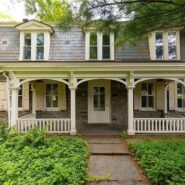
Jane Anderson | April 25, 2024 | Comment The Jan Pier Residence in Rhinebeck: $1.25M
-
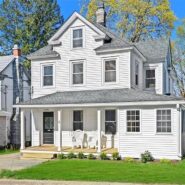
Jane Anderson | April 24, 2024 | Comment A C.1845 Two-Story in the Heart of Warwick: $524K
-
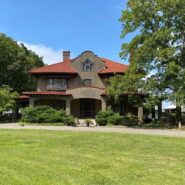
Jane Anderson | April 23, 2024 | Comment A Gothic Home in Hudson: $799.9K
-
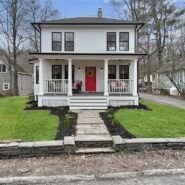
Jane Anderson | April 22, 2024 | Comment A Ravishing Renovation on Tinker Street in Woodstock for $849K

